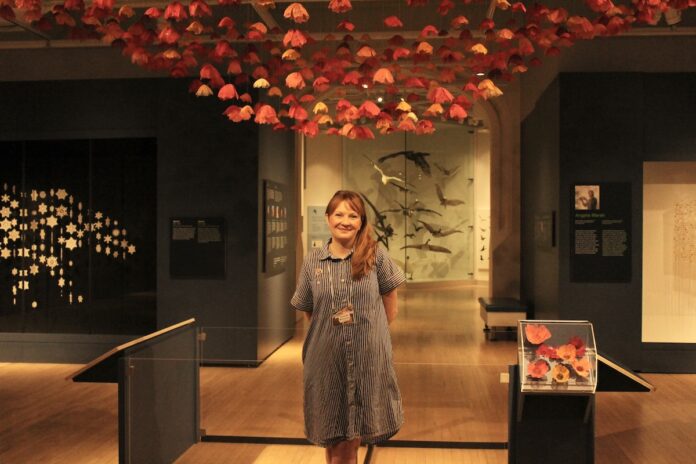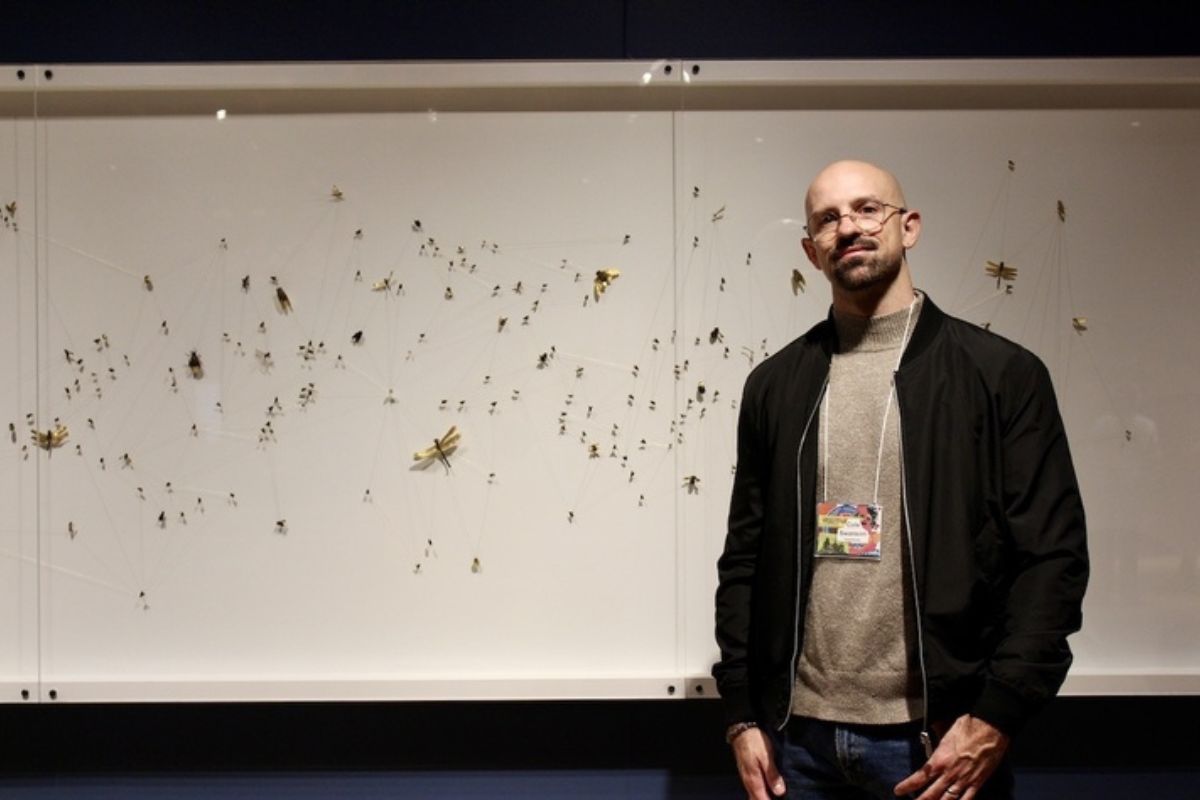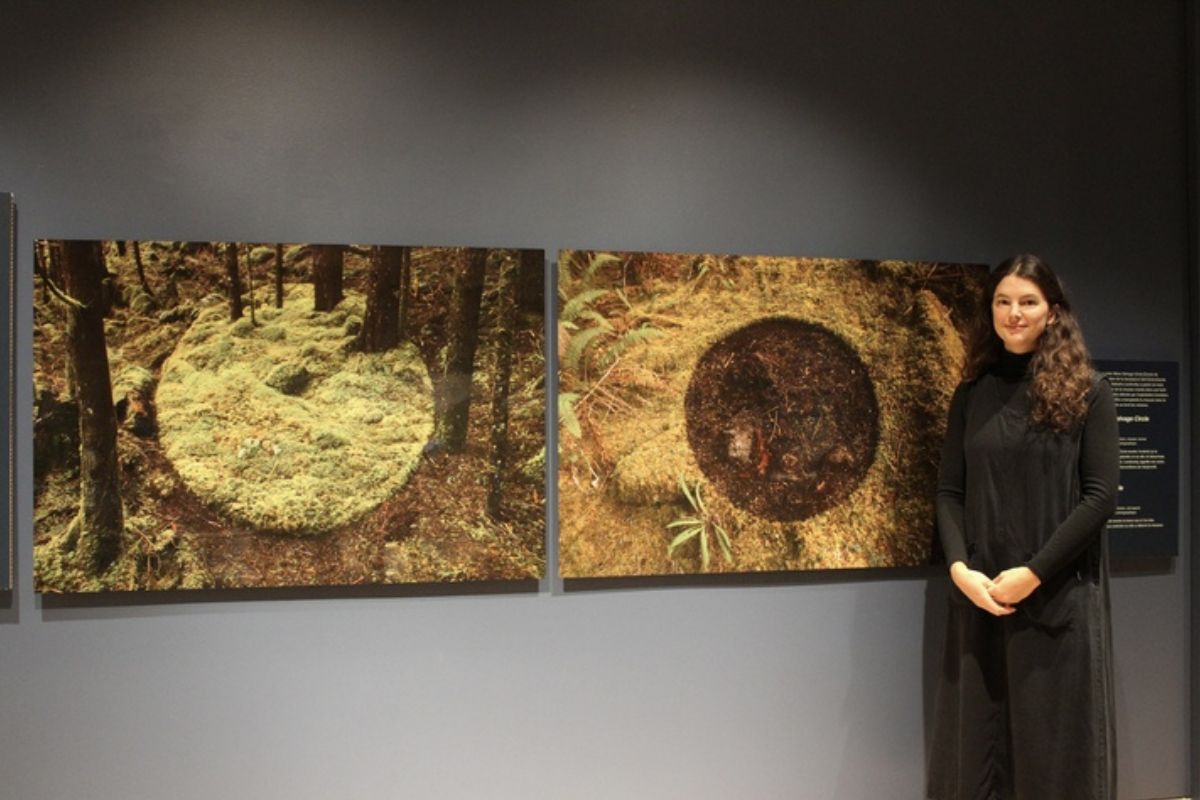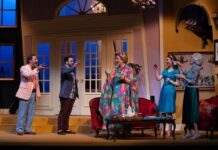
From gilded insects to a crocheted polar bear, a new exhibition at the Canadian Museum of Nature is celebrating the intersections of wildlife, stewardship and art.
On display until September 2025, the Rewilding exhibit showcases the artwork of the 13 winners of the inaugural David Suzuki Foundation Rewilding Arts Prize. The prize recognizes artists whose work highlights the role of nature in our society.
Each artist brings a personal connection to the concept of rewilding, said Jode Roberts, the project lead at the David Suzuki Foundation.
“Traditionally, rewilding would mean bringing more wildness and natural function to an ecosystem. But to me, it’s about connecting people with nature and rekindling our sense of wonder and all these human connections to nature that, over time, we’ve lost,” he said.
“The artists bring a visual and emotional touch to that.”
Exhibit curator Helen Gregory worked with the artists to bring their work to life within the gallery setting. She said she was inspired by the sense of kinship the artists highlight between themselves and “the more-than-human world.”
“What sticks out for me is the number of artists, who, when they’re talking about their practice, use the word care,” she said. “For so many of them, the things that they do are acts of care towards the environment.”
Upon entering the exhibit, perhaps the first thing to attract a patron’s eye is Amanda McCavour’s pink, red and white embroidered poppies hanging from the ceiling at the back of the gallery.
It’s a project that the Toronto-based artist has been working on since 2018. It consists of hand-stitching onto a structural base fabric before dissolving the base in water. She’s repeated this process several hundred times to complete the display.
“I want this piece to feel like a dream, like a fantasy,” she said. “The theme of rewilding, it often makes me think about nature and wonder and how in creating that connection with nature, we’re part of this wonder and beauty.”
“I want people to see the pieces moving subtly and take a second to observe, be present and walk around the work like you’d walk around a natural space.”
Hand-stitching techniques are also prominent within Janice Wright Cheney’s work. Titled “Sceptre,” it is made of dozens of crocheted snowflakes and crystals attached using string to shape the polar bear silhouette.
The work is a eulogy to a polar bear named Buddy who was held in captivity in the Banff Zoo from 1922 to 1938. Wright Cheney said she intended for the piece to resemble “an ephemeral ghost of the bear” to remind people of its history in captivity.
“We’re at the Canadian Museum of Nature where we are also looking at specimens, so it fits in here in an interesting way,” she said. “I hope visitors reconsider the different ways we look at nature and what that means, and think of the bigger concept of rewilding and being in nature.”

“[National parks] are branded as lots of beavers and Muskoka chairs as a quintessential Canadian identity that doesn’t necessarily reflect the experiences of a lot of immigrants and diverse perspectives that interact with the space,” she said.
“I wanted to disrupt that narrative and visualize foods, harvest and cultivation as other ways of interacting with nature.”
She said her work is “a little silly, but rewards a lot of attention,” especially her largest painting, which embeds visuals of nearly 80 species within the work.
Toronto-based artist Cole Swanson’s work also demands attention to detail, featuring roughly 300 insects gilded in 24-karat gold arranged to resemble a constellation.
He said inspiration struck in 2012 when he saw 14 dead insects laying inside the glass reservoir in the light fixture above his bed.
“Encountering these 14 little [insect] bodies reminded me that there are little organisms all around us, but we just don’t notice them because we do such good work at separating our lives from their lives while trying to scrub our worlds clean of them,” he said.

“I see the look on peoples’ faces when they encounter these bodies and they’re no longer disgusted,” he said. “They see wonder.”
Through her earthy photography, Vancouver Island-based artist Natasha Lavdovsky mourns the loss of wildlife during a 2022 logging project in a forest three kilometres away from her house.
After finding out the forest was slated for logging, she said she was inspired to transplant moss from the forest to a new ecosystem and arrange it in an artistic circle shape.
“It was a grief process because I can hear the machines that cut and pick up trees cutting the trees as I’m working,” she said. “Knowing that the whole forest would be gone in a couple months and that I’m trying to help a part of it continue its life nearby, it’s sad.”

Amid diverse perspectives of rewilding, Cerman said visitors should interpret the concept as a call-to-action to learn to give nature a voice.
“I think it starts a lot with rewilding ourselves,” she said. “We’re really domesticated creatures now, and a lot of that is really going out and just seeing nature.”
Featured image by Natasha Baldin/The Charlatan.





